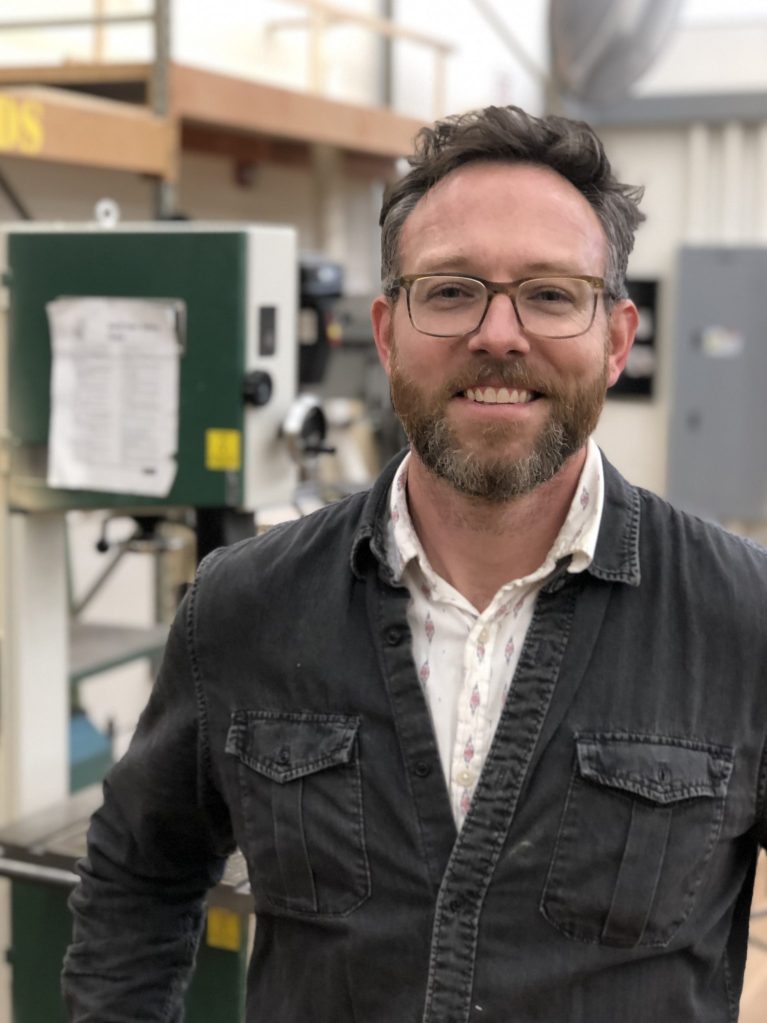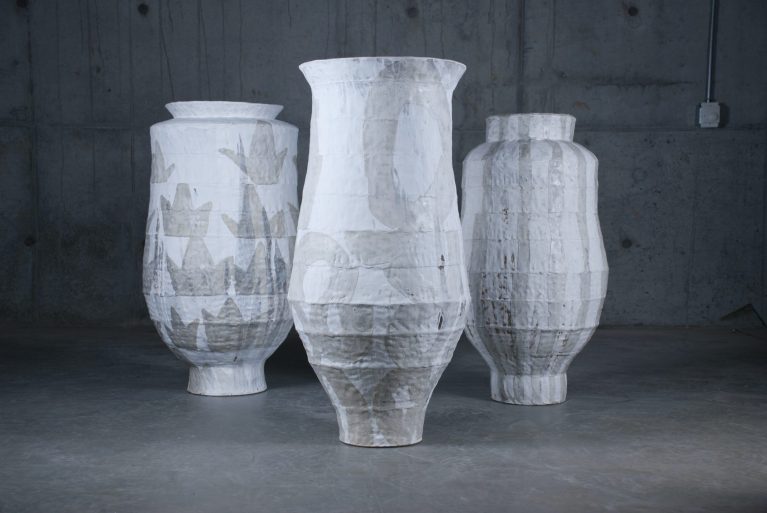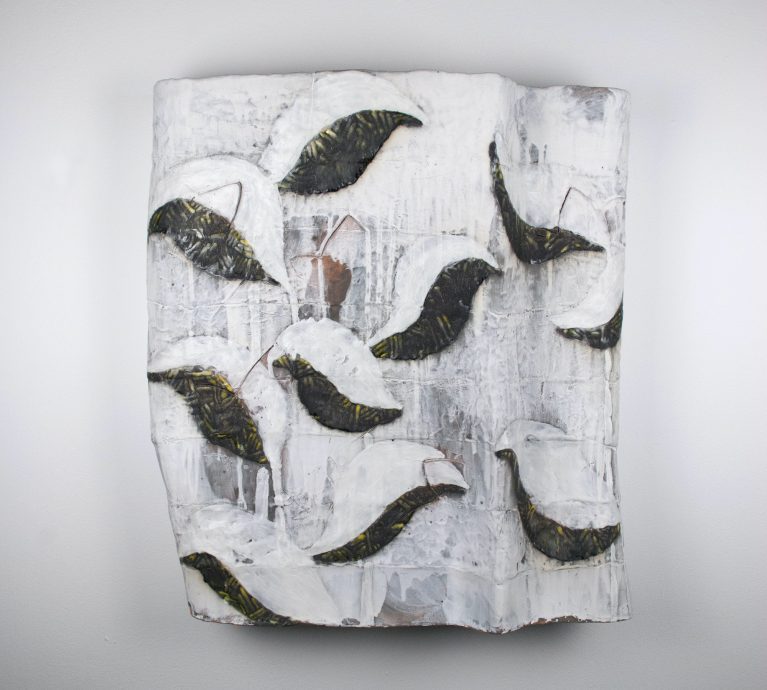Ogden Museum of Southern Art
925 Camp St
New Orleans, LA 70130
504.539.9650 | HOURS
925 Camp St
New Orleans, LA 70130
504.539.9650 | HOURS

Photo courtesy of Dryden Wells
What is your name? How do you like to be addressed?
My full name is John Dryden Wells. I prefer to be called by my middle name, Dryden, a family name that I share with my father and grandfather.
Where are you from? What brought you to New Orleans/the South?
Growing up, my family spent most summers traveling to the South for our annual vacations. In 2016, I was hired to run the ceramics program at the University of West Florida in Pensacola. Born and raised in St. Louis, Missouri, a city built of bricks, I have always felt a strong connection to the beautiful, red iron rich soil of the South. Of course, because of each cities’ strong French heritage and relationship with the mighty Mississippi, I have always felt a strong connection between New Orleans and St. Louis.
After several years of living in China (9 yrs), Montana (1 yr) and a year in Pensacola, my partner Andrea Moon, also a ceramic artist, was hired as the Director of Education for Craft alliance, St. Louis in 2017. We have been here since, continuing to build our studio practices and to invest in the community.
What is your favorite piece that you’ve made so far?
I am currently most excited about my most recent body of work, a series of large hand-built wall forms and vessels. The works have provided me with a challenge in scale and have combined my interest in form and volume while allowing me to escape from function. The vessels, wall forms and material are intended to provide a vehicle on which to draw, mark make, layer and create depth.
I have always thought of the process of making as a series of temporary romances. In the moment of making, I am captivated by the idea, material and potential of that piece / body of work. However, my hands cannot keep up with my brain and often by the time I complete a work, my brain has long since moved on to the seduction of a new idea.

Vessels from the Segmented Drawing Series, Courtesy of Dryden Wells
Tell me about your journey as an artist. How did you get where you are today?
I have always felt very lucky to have extremely supportive parents! Shortly after undergrad, I secured a wonderful teaching job from which I could have easily stayed with and retired. My parents knew that I still needed to be in the studio and persuaded me to quit my job and go back to graduate school for ceramics. It was very much a “seize-the-day” moment brought on by my parents. Upon taking that leap in 2005, I invested myself in ceramics and studio practice and have not looked back.
Upon the completion of my MFA at Texas Tech University in 2008, I moved to Jingdezhen, China, to manage and oversee production of the Pottery Workshop (PWS) – Design Studio. After a year (2011-12) of teaching Ceramics at Missouri State University in Springfield, MO, I moved back to China to work at the PWS – Shanghai location. Here, I had the opportunity to instruct weekly studio classes, college courses, as well as continue the development of my own creative work. During 2016 and 2017, I taught a semester at Northwest College, Powell, WY and spent the following academic year running the ceramics program at the University of West Florida in Pensacola. In 2017-18, my partner, Andrea Moon and I returned to Jingdezhen to Co-Direct the Pottery Workshop – International Residency and Education Center. Shortly after returning to St. Louis in 2018, I was hired as an Instructional Technician of wood, metals and ceramics at the Sam Fox School of Design & Visual Arts, Washington University and have been there since.
My new position at Wash U has really turned into a dream job! As a student-facing position, I get to work with students regularly in problem-solving and process. It is also expected that I am continually developing my craft and proficiency with all of the machines, tools and processes that we offer. Part of my love for ceramics has always been the problem solving that it continually requires. I have found that working in these other materials and shops has provided me with so many more avenues of problem-solving and understanding of making.
What kind of impression do you hope someone observing your work gets?
I truly hope that my work causes someone to slow down and appreciate the material and handmade qualities of the object. I want these objects of daily use to give the user a feeling of authenticity and a comfort of functionality. As it is always a dance to try to balance these two, I strive to make the work appear fluid and natural, and to avoid it appearing contrived or pretentious.
Have you received any criticism or advice that helped you grow as an artist?
I was once told by a visiting artist in graduate school, “no more f%#$ing teapots!” At the moment, this caught me off guard, but when given the opportunity to step away and consider why they said this, it made me realize that I had been using the teapot as a vehicle for other ideas that were not necessarily connecting. The teapot presented simple parameters and a comfort that made it too easy to rely on and consequently was limiting my development and growth. Fortunately, this conversation happened in the first semester of my first year. That conversation and piece of advice definitely altered my trajectory.
Should lines be drawn between “fine art” and “craft?” How do you define separation between the two?
I would not say that I think lines should be drawn between fine art and craft, but I do think it is a conversation that continues because that line or a qualifying difference can be so difficult to discern. For me, material is inherent in craft. I do not believe you can have one without the other. Whereas fine art does not have to be tied to a material.

Tile from the Flora Series, Courtesy of Dryden Wells
How can people continue to follow your work and career?
I try to keep an updated website and would love it if people took a moment to check it out at www.drydenwells.net. I can also be found on Instagram @dryden.wells.
You can view Dryden Wells’ work in this year’s Art of the Cup, on view at Ogden Museum of Southern Art September 24 to November 28, 2022.
Learn more about Art of the Cup